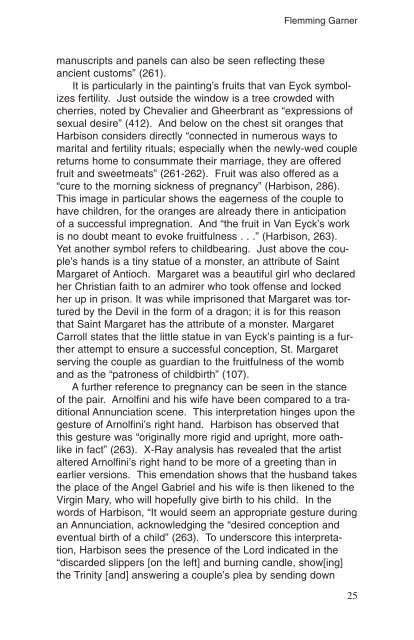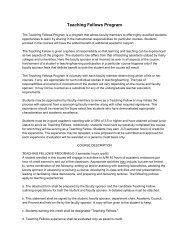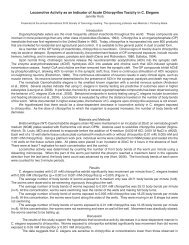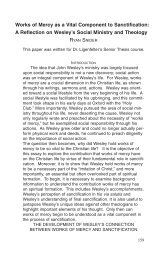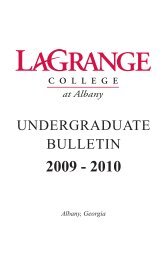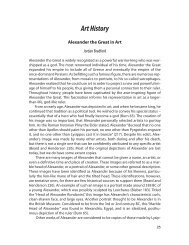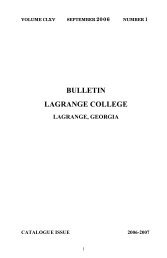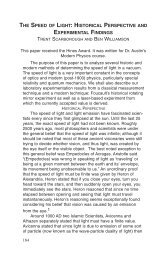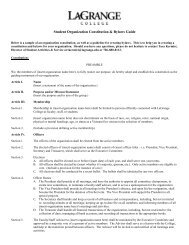Giovanni Arnolfini and His Bride
Giovanni Arnolfini and His Bride
Giovanni Arnolfini and His Bride
Create successful ePaper yourself
Turn your PDF publications into a flip-book with our unique Google optimized e-Paper software.
Flemming Garner<br />
manuscripts <strong>and</strong> panels can also be seen reflecting these<br />
ancient customs” (261).<br />
It is particularly in the painting’s fruits that van Eyck symbolizes<br />
fertility. Just outside the window is a tree crowded with<br />
cherries, noted by Chevalier <strong>and</strong> Gheerbrant as “expressions of<br />
sexual desire” (412). And below on the chest sit oranges that<br />
Harbison considers directly “connected in numerous ways to<br />
marital <strong>and</strong> fertility rituals; especially when the newly-wed couple<br />
returns home to consummate their marriage, they are offered<br />
fruit <strong>and</strong> sweetmeats” (261-262). Fruit was also offered as a<br />
“cure to the morning sickness of pregnancy” (Harbison, 286).<br />
This image in particular shows the eagerness of the couple to<br />
have children, for the oranges are already there in anticipation<br />
of a successful impregnation. And “the fruit in Van Eyck’s work<br />
is no doubt meant to evoke fruitfulness . . .” (Harbison, 263).<br />
Yet another symbol refers to childbearing. Just above the couple’s<br />
h<strong>and</strong>s is a tiny statue of a monster, an attribute of Saint<br />
Margaret of Antioch. Margaret was a beautiful girl who declared<br />
her Christian faith to an admirer who took offense <strong>and</strong> locked<br />
her up in prison. It was while imprisoned that Margaret was tortured<br />
by the Devil in the form of a dragon; it is for this reason<br />
that Saint Margaret has the attribute of a monster. Margaret<br />
Carroll states that the little statue in van Eyck’s painting is a further<br />
attempt to ensure a successful conception, St. Margaret<br />
serving the couple as guardian to the fruitfulness of the womb<br />
<strong>and</strong> as the “patroness of childbirth” (107).<br />
A further reference to pregnancy can be seen in the stance<br />
of the pair. <strong>Arnolfini</strong> <strong>and</strong> his wife have been compared to a traditional<br />
Annunciation scene. This interpretation hinges upon the<br />
gesture of <strong>Arnolfini</strong>’s right h<strong>and</strong>. Harbison has observed that<br />
this gesture was “originally more rigid <strong>and</strong> upright, more oathlike<br />
in fact” (263). X-Ray analysis has revealed that the artist<br />
altered <strong>Arnolfini</strong>’s right h<strong>and</strong> to be more of a greeting than in<br />
earlier versions. This emendation shows that the husb<strong>and</strong> takes<br />
the place of the Angel Gabriel <strong>and</strong> his wife is then likened to the<br />
Virgin Mary, who will hopefully give birth to his child. In the<br />
words of Harbison, “It would seem an appropriate gesture during<br />
an Annunciation, acknowledging the “desired conception <strong>and</strong><br />
eventual birth of a child” (263). To underscore this interpretation,<br />
Harbison sees the presence of the Lord indicated in the<br />
“discarded slippers [on the left] <strong>and</strong> burning c<strong>and</strong>le, show[ing]<br />
the Trinity [<strong>and</strong>] answering a couple’s plea by sending down<br />
25


